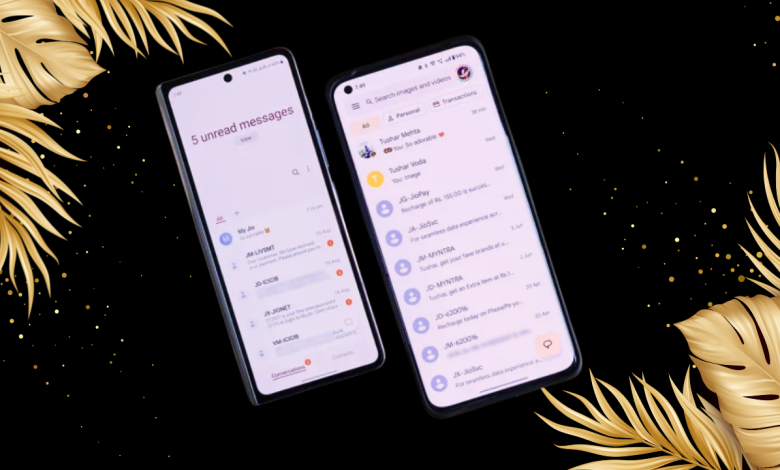
In the English language, two words that sound very similar but have vastly different meanings are message vs massage. Despite the one-letter difference in spelling, these words carry distinct connotations and serve different purposes in communication and wellness. We’ll explore the nuances of each and discover why it’s so important to communicate clearly.
See more : Budget For Academic Support
Message vs Massage
| Aspect | Message | Massage |
| Definition | A communication or information transmitted from one person or entity to another. | Manipulation of body tissues, typically for therapeutic or relaxation purposes. |
| Purpose | To convey thoughts, ideas, or instructions. | To promote relaxation, relieve tension, and improve physical well-being. |
| Medium | Can be conveyed verbally, in writing, or through electronic means (e.g., text, email). | Involves physical touch, typically using hands, fingers, or specialized tools. |
| Examples | Text messages, emails, letters, phone calls. | Swedish massage, deep tissue massage, shiatsu, Thai massage. |
| Benefits | Facilitates communication, information exchange, and expression of emotions. | Reduces muscle tension, alleviates stress, improves circulation, promotes relaxation. |
| Application | Used in various contexts: personal business academic, etc. | Administered in spas, wellness centers, clinics, and sometimes at home. |
Understanding Message
A message is a piece of information that is communicated between parties. It can be transmitted verbally, in writing, or through non-verbal cues such as body language or gestures. Messages can vary in complexity, ranging from simple greetings to detailed instructions or emotional expressions.
Communicate clearly
Communication is a thread that runs through the fabric of life itself, weaving its threads through the grand tapestry of human connection. Whether in the delicate dance of personal relationships, the bustling corridors of business, or the everyday chatter of existence, its significance knows no bounds. The art lies in sculpting messages that are as clear as they are concise. This nurtures understanding while warding off the shadows of misunderstanding and misinterpretation.
Differentiating “Massage”
Contrastingly, a massage denotes the therapeutic manipulation of muscles and soft tissues within the body, aimed at fostering relaxation, easing tension, and enhancing holistic wellness.Massages are often administered by trained professionals and can target specific areas of the body to address issues such as muscle tightness, soreness, or stress.
Role of Massage in Wellness
Massage therapy has been practiced for centuries and is renowned for its myriad benefits. Beyond just relaxation, massages can help improve circulation, reduce inflammation, relieve pain, and enhance mental and emotional health. The various types of massages available are tailored to individual needs and preferences, from Swedish massages to deep tissue massages.
Examples Illustrating the Difference
To better grasp the disparity between “message” and “massage,” let’s consider a couple of scenarios:
Scenario 1:
Message: “I’ll meet you at 5 p.m. outside the café.”
Massage: A therapist uses kneading and stroking techniques to ease muscle tension in the client’s shoulders.
Scenario 2:
Message: “Please remember to pick up milk on your way home.”
Massage: A spa offers a range of massage treatments, including hot stone therapy and aromatherapy, to promote relaxation and rejuvenation.
Impact of Miscommunication
Confusing “message” with “massage” can lead to humorous misunderstandings, but in serious contexts, miscommunication can have significant consequences. In any form of communication—be it through written letters, spoken guidance, or online chats—achieving clarity stands as the foremost priority. It’s the cornerstone ensuring that the message intended finds its mark, resonating clearly and comprehensively with its recipient.
Tips for Effective Communication
To avoid confusion and ambiguity in communication, consider the following tips:
Be clear and concise in your expression.
To fully understand what others are saying, practice active listening.
Make sure written messages are grammatically and spelling correct.
Provide context when necessary to ensure clarity.
Conclusion
In conclusion, while message vs massage may sound alike, they serve distinct purposes in communication and wellness. Clear communication is vital for effective interpersonal relationships and successful interactions, just as massage therapy is essential for promoting relaxation and improving overall well-being.
FAQs (Frequently Asked Questions)
Are there any other words that sound similar but have different meanings?
Yes, English is full of homophones, words that sound alike but have different meanings, such as “there,” “their,” and “they’re.”
Can miscommunication have serious consequences?
Absolutely. Miscommunication can lead to misunderstandings, conflicts, and even financial or legal repercussions in certain situations.
How often should I get a massage?
Individuals have different needs and preferences when it comes to massage frequency. Depending on the individual, regular sessions may be beneficial, while others may only need treatments on an as-needed basis.
Is it possible to learn massage techniques at home?
While professional training is recommended for comprehensive massage therapy, there are simple techniques that individuals can learn for self-massage or relaxation purposes.
What should I do if I receive a confusing message?
If you’re unsure about the meaning of a message, don’t hesitate to seek clarification from the sender to avoid misunderstandings.




One Comment